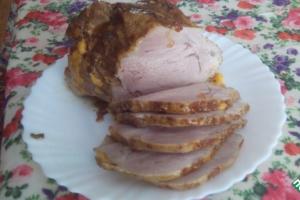It is preferable to insulate the room from the outside. In this case, a greater heat-saving effect is achieved, load-bearing structures are protected from the influence of the external environment, and the usable area is not reduced. But this is not always possible, especially when it comes to apartment buildings. It is cheaper and more convenient to insulate the walls of a home with plasterboard and penoplex from the inside.
Benefits of penoplex
At internal insulation Foam plastic, mineral wool or penoplex can be used under gypsum plasterboards. Polystyrene foam does not have the best thermal conductivity, and mineral wool is hygroscopic, so penoplex is more preferable for this method of thermal insulation. This is facilitated by its characteristics:
- Light weight of slabs.
- Ease of processing and giving the desired shape, which greatly simplifies installation. For example, if there is a window or radiator on the wall, then it is not difficult to cut out a piece of foam plastic of the required size to go around them.
- Good moisture and vapor barrier performance.
- Good noise-absorbing properties.
- Strength, durability, safety.
There are few disadvantages:
- The material does not withstand prolonged exposure to the sun. Therefore, you must follow the rules for its storage.
- During operation, it may be damaged by rodents.
- Quite expensive compared to other materials.
A few nuances that you need to know about when installing insulation under drywall
As already mentioned, insulating walls from the inside is not the most optimal solution due to some disadvantages of this method. Let's consider 3 main nuances:
- Dew point offset. It ends up between the wall and the insulation, so the base can become damp from the inside.
- Reducing the size of the room. Thermal insulator, frame, gypsum boards occupy part of the internal space.
- Decline permissible load to the surface of the ceiling. The insulation may not withstand heavy objects hung on the wall, so if necessary, it is recommended to use anchors.
Required materials and tools
To install insulation under drywall you will need:
- Directly the penoplex itself. For internal wall insulation, products marked “C” with a thickness of up to 30 mm are used.
- Reinforcing mesh, plaster and putty. They are useful both for leveling the base surface and for finishing drywall.
- Deep penetration primer and special for gypsum plasterboards.
- Glue intended for fastening penoplex.
- Vapor barrier.
For the frame method of installing drywall, penofol with a foil surface is ideal. It will reflect heat into the room.
- Dowels. The insulation boards are fastened to their disc-shaped type, and the metal frame profiles are fastened to dowel-nails.
- Guide and rack profile for creating a frame.
- Metal screws for fastening elements, direct hangers and other necessary fasteners.
- Silicone sealant.
Tools:
- Drill with mixer and container for preparing adhesive solution.
- A hammer drill with a drill for drilling holes for dowels on which we will attach profiles.
- Metal scissors.
- Screwdriver.
- Painting knife.
- Spatulas and graters, sandpaper.
- Roller and brush for applying primer.
- Marking tools: level, plumb line, tape measure, pencil.
Methods for laying penoplex under drywall
There are two installation options: with and without a frame. You can correctly install insulation under gypsum boards with your own hands using both methods, the main thing is to know their advantages and disadvantages.
- The frameless method is suitable for insulating small and flat surfaces. Quick, easy installation of insulation and drywall. Disadvantages: inability to level the base surface, low structural strength.
- The frame method is used if the walls are curved or have a significant area. This type of structure is more difficult to build, but it is more reliable.
Penoplex insulation under drywall without frame
Step-by-step instructions will be like this:
- At the first stage, it is prepared base surface: the old coating is removed, cracks and potholes are sealed, and protrusions are knocked down. The wall should be as flat as possible.
- The surface is treated with a deep penetration primer.
- According to the manufacturer's recommendations, a special composition is prepared. If you don't have it, you can use tile adhesive.
- The inside of the insulation board is rolled with a needle roller. Another option is to brush it with a metal brush. This will ensure good adhesion to the adhesive solution.
The glue is applied to the surface of the sheet using a notched trowel. It is not necessary to cover the entire slab with the composition: it is enough to coat the perimeter and center, options are shown in the photo.
- A fragment of insulation is applied to the wall and held for a minute. Be sure to check the correct installation at the building level.
- They start from the bottom. It is recommended to move the rows relative to each other so that the slabs are staggered.
For reliability, penoplex is secured with disc-shaped dowels: 4 are placed at the edges and one in the center.
- The seams between the slabs are filled silicone sealant, wide cracks can be sealed with foam.
- Drywall is attached to the insulation using. The scheme for applying the composition is the same as for penoplex slabs. It is recommended to place a layer of vapor barrier between them.
- After the glue has dried, which will take 24 hours, finishing drywall. The seams are sealed using putty and serpyanka mesh, rubbed down, after which the entire surface is covered with a double layer of primer.
- Vertical elements are mounted. They are screwed to the guides with metal screws. The deviation is adjusted using direct hangers located every 50–60 cm. The position of the racks is checked with a building level.
- Glue the penoplex to the wall in the same way as with the frameless method. The insulation boards are rolled with a roller with needles, and an adhesive solution is applied. Then they are tightly inserted between vertical posts and press for 40–60 seconds.
Advice. Pieces of insulation are placed in the metal profile to prevent heat transfer through the studs. Another option is to fill them with foam.
- Sheets of drywall, if necessary, are cut into the required fragments. Docking of gypsum boards occurs strictly on racks. Fixation is carried out with self-tapping screws in increments of 25–30 cm. In order not to damage the surface of the drywall during installation, a special bit is placed on the screwdriver, limiting the depth of screw tightening. You can find it in construction stores.
- It is made using reinforcing tape and putty. After grouting, the entire wall is covered with two layers of a special primer for drywall. The second layer is applied after the first has dried.
Thus, it is quite possible to insulate the walls of an apartment from the inside using penoplex and plasterboard with your own hands. If you do everything correctly and carefully, the desired effect will definitely be achieved. The process can be seen in detail in the following video. And if you have any questions during the work, ask them in the comments.
This method of reducing heat loss has a significant drawback - when installing an internal insulating layer, the dimensions of the room are reduced. And yet, this is how property owners quite often decorate their buildings. When is this appropriate?
- Firstly, although external insulation is basic for all structures, it is often impossible to equip it for purely technical reasons. For example, if the building is adjacent to another building that is not heated at all (utility or storage rooms, etc.).
- Secondly, even if high-quality external insulation does not provide adequate efficiency.
The question involuntarily arises, what does drywall have to do with it, which does not belong to the group insulation materials? Yes, this product itself is not a “thermal insulator”, but it is advisable to use it for interior decoration surfaces during such events. Its sheets have strict geometry and a flat surface, so you can lay any thermal insulation material for insulating walls from the inside under plasterboard.
By the way, indirectly it itself helps to reduce heat loss. During the installation process, a small gap, an air “cushion,” remains between the insulation material and the drywall. And such a layer does not transmit heat well.
Stages of wall insulation
Preparing the walls
Quite often, articles on this topic indicate that the only condition is to ensure that the surfaces are dry and clean. But if you look more closely into this issue, it will become clear that you should not limit yourself to activities such as “cleaning - washing - drying”. Further finishing of the wall, for which it is being prepared, will hide it from our eyes for a long time.
Therefore, you need to make sure that it is reliably protected from various influences, and first of all, moisture. This will allow you not to worry about the condition of the base on which the insulation is laid for a long time.
To do this, after cleaning it, the zealous owner must treat the surface with special impregnating compounds (antiseptics and fire retardants). For wood, such work is mandatory.
Well, if the wall has significant defects, then they need to be eliminated immediately. Any cracks or crevices at the joints are “loopholes” through which heat will escape. In addition, large irregularities (especially bumps) will significantly complicate the further process of insulating the walls from the inside under drywall.
Fastening sheathing under plasterboard
Many thermal insulation materials can be fixed in place using the gluing method. But do not forget that later you will also need to mount the sheets outer skin. It is for them that the load-bearing frame is first prepared, since the plasterboard will be fixed to its slats.

1 - sheet of drywall; 2 - sealant; 3 - guide profile, 4 - ceiling profile; 5 - gap for uneven walls or pipe lines; 6 - direct suspension; 7, 8 - sealing tape
A little about this design. Traditionally, wood is used for its installation. But this material in this case has, in our opinion, 2 limitations.
- Firstly, 1 rail weighs a little, but the entire assembly is already a rather massive structure. What if the walls are made of cellular concrete? It is clear that there will be difficulties with fastening.
- Secondly, depending on local conditions, the characteristics of the thermal insulation material are calculated, including its thickness (for example, 10 cm). Therefore, you need to choose slats for it. The sheathing will be quite heavy, and you will still have to look for such slats.
It is more advisable to buy profiles, especially since there are special ones on sale designed specifically for laying insulation under drywall. It is better to purchase “galvanized”, as it can even be cut with scissors (thickness is about 0.5 mm).
Now – about the distance between the profiles. You need to focus on the dimensions of the sheets of drywall and insulation, since cutting them is much more difficult and a waste of time. But since they are rectangular, they can be mounted in different ways - vertically, horizontally. General principle The choice of the required “step” of profiles is clear.
Before installing them on the “sole” you should stick special tape. This will reduce the heat transfer between the profiles and the wall and eliminate possible temperature deformation of the slats. Although it is insignificant, it will affect the quality of sealing of joints.
The alignment of the profiles is controlled on both planes (vertical, horizontal) by the building level. This is important, otherwise the drywall sheets will not form a flat surface.
Installation of insulation under drywall
The products are placed between the slats of the supporting frame. The nuances of fastening depend on the type of material. For example, polystyrene foam is glued to the wall and additionally fixed with special dowels.
All joints must be sealed. Between the slabs - construction tape, between the insulation and the ceiling - silicone sealant.
Surface finishing
It also depends on the type of insulation. For example, if it is mineral wool, then it needs to be protected from moisture, which it absorbs well. For this purpose, appropriate materials are used (Ecofol and a number of others). It is also necessary to install a vapor barrier. When choosing a “thermal insulator”, you should consult a specialist on this issue.

1 – plasterboard sheet; 2 – vapor barrier; 3 – thermal insulation; 4 – waterproofing; 5 – cement bonded particle board; 6 – wooden frame
Fastening drywall
Produced with self-tapping screws. The joints of the sheets must be puttied. After this, it is advisable to sand them and cover them, for example, paint and varnish composition, tape to prevent cracking of the putty.

- All insulation used under drywall (as well as its sheets) have certain dimensions. Therefore, the sizes of all materials used must be selected so that they “fit” each other. Then there will be fewer different “cuts” and adjustments, and therefore the work will go faster. In addition, you need to understand that the more joints, the lower the quality of thermal protection.
- If communication lines run along the walls, then insulation must be placed under them. You may need thinner material. All this is calculated in advance.
- In order not to disturb the natural circulation of air masses, a small gap should be left between the slats and the insulation material.
- If you plan to mount something on the wall (a picture, a cabinet, etc.), then you need to make appropriate marks on the surface of the drywall (where to install the hardware).
You need to understand that insulating only one wall will not give the desired effect. Such an event should be carried out comprehensively, with finishing of all surfaces of the room.
Insulating walls from the inside with mineral wool plus plasterboard is an extremely popular method of thermal insulation that has two goals at once: preserving heat in the house and preparing the walls for further finishing.
Options for insulating brick and wooden houses
Thermal insulation of the room from the insideInsulation of a house can be done in different ways:
- by filling the air gap brick wall foam chips or polyurethane foam;
- by external cladding of the facade with expanded polystyrene and mineral wool;
- through internal thermal insulation.
In both stone and wooden private houses, there should be not only internal thermal insulation, but also external, because only together they can provide reliable and high-quality insulation of the house. Nevertheless, there are cases when it is not possible to provide external thermal insulation, in which case the only option may be internal insulation of the walls with mineral wool covered with plasterboard.
The reasons why developers resort to thermal insulation from the inside of the building may be as follows:
- insufficient distance between individual buildings;
- a ban on changing the external appearance of the facade (if, for example, the house has historical or any other value);
- irreparable defects of the facade;
- the adjoining of the façade walls to non-residential premises of a technical nature (elevators, flights of stairs).
Mineral wool: features, advantages and disadvantages of the material
Mineral wool is the most commonly used thermal insulation material. This popularity is due high level thermal insulation qualities of the material against the background of its low cost.
 Reliable and effective thermal insulation
Reliable and effective thermal insulation The material has many advantages:
- The structure of mineral wool is fibrous, i.e. it has air layers that improve thermal insulation;
- mineral wool prevents the penetration of noise and vibrations from the street;
- it is a “breathable” material;
- unlike polystyrene foam, rodents do not like mineral wool;
- It is light in weight, which makes working with it simple and quick;
- mineral wool is produced both in rolls and in slabs; in addition, the structure allows it to be laid in several layers at once, which, in turn, significantly increases the thermal insulation characteristics;
- if, along with internal insulation with mineral wool, external insulation of the wall was carried out, then there is no need to re-install the waterproofing;
- there is no need to use special fasteners, because the slab can simply be inserted into the frame.
Among the disadvantages of the material are the release of toxins when heated, as well as the need to use special respirators and protective clothing during installation, because its smallest particles can injure human mucous membranes.
Features of cladding and insulation of house walls with plasterboard
 Using gypsum plasterboard it is easy to level walls
Using gypsum plasterboard it is easy to level walls Using plasterboard sheets for wall cladding, you can simultaneously achieve an ideal microclimate in a wooden or any other private house, as well as leveling the surface of the walls for finishing.
Surprisingly, even on their own, without insulating material, plasterboard sheets are capable of insulating a house (of course, only if they are well reinforced and there are no gaps between the sheets). This property is inherent in plasterboard for the reason that it has low thermal conductivity - 8-10 times less than, for example, a reinforced concrete slab.
If you don’t limit yourself to just plasterboard, but strengthen it on a metal frame and additionally install it in the space between the wall and the sheet mineral wool board, then the thermal insulation properties will increase several times more.
Additional materials
In addition to drywall and mineral wool, in order to insulate a wooden house, we will need:
- vapor barrier film (or regular polyethylene film);
- a breathable membrane or a fleecy two-layer film that retains moisture;
- antiseptic solution required for treatment wooden surfaces frame (if a wooden rather than metal frame is chosen) and walls;
- profile made of metal or wood (for drywall would be better suited metal, because wood is too susceptible to rotting);
- fastening elements: dowels, self-tapping screws for fixing the profile;
- tape for joining the vapor barrier, as well as staples and a stapler for fastening it.
Work technology
The entire thermal insulation process can be divided into several stages, each of which is described below..
Preparing the wall and treating it with an antiseptic, antifungal solution (if there is already mold on the surface of the wall, it needs to be washed with special solutions and then dried with a hair dryer).
Creating a frame. The frame can be either metal (galvanized metal profile) or made of wooden beams. It is better to attach drywall to a metal profile. The main thing is that the thickness of the metal profile is identical to the thickness of the insulation. In addition, the distance between the horizontal and vertical slats should be equal to the size of the slab or roll of mineral wool.


Laying mineral wool in the space between the profile slats (it is best to choose slab wool in advance; if you take roll wool, you will have to first cut it into pieces of a suitable size, with a small margin in case of further shrinkage).
 Installation of insulation
Installation of insulation A layer of vapor barrier is laid on top of the mineral wool.
 Installation of vapor barrier film
Installation of vapor barrier film Drywall is attached, after which all joints between the sheets are carefully sealed.
 Plasterboard finishing
Plasterboard finishing Thus, insulating a house with mineral wool and plasterboard is a very simple procedure that can be accomplished simply by following the instructions above.
Mineral wool in combination with plasterboard significantly reduces the noise level, which will significantly make life easier in houses located in close proximity to entertainment spots: bars, restaurants, metro lines.
In addition, the top layer of plasterboard is an ideal base for almost any finishing.
Any home renovation work must be carried out with extreme care. It is worth carefully choosing materials for construction and monitoring the quality of the work performed. The final result will directly depend on these factors. Currently many brick houses are in unsatisfactory condition, which brings inconvenience to their residents. It is often necessary to replace window units, as well as to carry out work on home insulation. Facade work can be difficult, but insulating the walls of a house inside under drywall can be done independently. The method is effective and anyone can handle it.
A situation often arises when walls require not only insulation, but also a change in geometry, simply put, alignment. Excellent universal solution may be the use of drywall sheets. They themselves are initially an excellent sound absorber and heat insulator. If installation is carried out frame method, then between the drywall and the wall surface there remains free space in which an additional insulating layer can be placed. This method very effectively retains heat in a living space and does not require hired force, since it is quite simple to implement. All you need to do is calculate the quantity Supplies and study insulation technology.
The plasterboard slab is attached to the wall in one of the following ways:
- Adhesive - direct installation is only suitable for walls with minor defects.
- Frame - recommended by experts. The metal base can retain its shape for many years and better retains heat indoors.
For maintaining a favorable temperature regime In a home, not only the heating system is responsible, but also the thermal insulation properties of the materials that were used in the construction and finishing of the wall surfaces. The low thermal conductivity coefficient contributes to the fact that the room maintains comfortable temperature. If there are gaps in the windows and walls, they will release warm air from the premises during the cold period and the owners will be faced with the question of insulating the walls in order to trap warm air inside the living space.
Expert opinion
Konstantin Alexandrovich
Ask a question to an expertThe thermal conductivity index of gypsum plasterboard is lower than a similar parameter usually used in construction concrete slab 10 times and is 0.15. Based on this, a sheet of drywall, even on its own, will be a good way to conserve heat. If you install insulation under a layer of drywall, the thermal insulation properties of the walls will significantly improve. For these purposes, a frame is mounted, creating an additional layer of air.
List of the best materials
To insulate walls under drywall, the following types of insulation are used: 
- Styrofoam;
- glass wool;
- isolon;
- basalt wool.
They differ from each other in technical indicators and pricing policies. Based on this, the choice of material should be made in advance, before work begins.
Extruded insulation
The material consists of foamed polystyrene granules. It is characterized by low density and light weight; slabs of various thicknesses can be found on sale. The material is popular because of its affordable cost, it is convenient to install even without a frame, and it is on sale almost everywhere, in most repair stores. 
There are also some disadvantages:
- low level sound insulation;
- raw materials do not allow air to pass through and require ventilation;
- fragile and unable to withstand damage;
- Rodents can settle in the material, which will damage the insulation and require its dismantling and replacement.
Glass wool
The material is soft and flexible, relatively thin, which helps save space. The thermal conductivity coefficient is low, the cost is affordable. However, do not forget about the specifics of the insulation; its installation may be unsafe for health. 
When glass wool fibers come into contact with mucous membranes and skin, they cause a burning sensation and unbearable itching. Installation work should only be carried out using special clothing: a respirator, safety glasses and gloves. These inconveniences make the demand for glass wool not too high.
Izolon
A new type of insulation, consisting of polyethylene foamed with propane. It weighs little, has low density and contains a large number of air bubbles. This allows you to successfully retain heat in the room and increase the level of sound insulation. Its thickness is insignificant and saves useful living space. 
Some manufacturers produce isolon immediately with a thermal protection layer consisting of foil. If such a layer is missing, you can create it yourself by attaching construction foil to the isolon using glue.
Basalt wool
The cost is higher than glass wool and foam, but it is offset by other advantages. First of all, this natural material, to create which a melt from rocks is used. 
Distinctive qualities:
- natural;
- does not cause allergies;
- high strength;
- fire resistant.
The composition includes a large number of stone fibers of small thickness. The presence of an air gap between them determines the excellent thermal insulation properties of the material. Another important difference from other types of mineral wool is its inability to absorb moisture, which allows it to be used even at high humidity.
The only disadvantages include high prices for basalt wool.
Step-by-step algorithm for do-it-yourself insulation
Let's consider the procedure for internal wall insulation using plasterboard attached to the sheathing:

Installation of a profile frame for insulation
To mount the frame, you will need the following list of materials:
- ceiling profile 60*27;
- guide profile 28*27;
- straight hangers;
- self-tapping screws;
- set of dowels 6*33.
Before installation begins, markings should be made according to which the guides for installing the wall insulation will be attached. They are attached using dowels located 40 or 60 centimeters in relation to each other. To avoid the formation of cold bridges, a special tape is laid under the surface of the suspensions and guides. Direct hangers are mounted on self-tapping screws; they act as brackets. 
Before laying the thermal insulation and sheathing the frame with sheets, you should make sure that the room is not infected with fungus. After the work is completed, mold may spread, and then all structures will have to be dismantled and cleaned. It is necessary to examine all surfaces as carefully as possible. If you find signs of fungus, the infected area should be thoroughly dried with an industrial hair dryer. After this, the mold is removed wire brush, and a special antifungicidal composition is applied to the surface itself. After it dries, a layer of waterproofing putty is applied. You can build a frame and insulate the wall only after the solution has dried.
Arranging a vapor barrier layer
Penofol often acts as a vapor barrier. Before fixing the material, you should make sure that the foil surface is facing the room. 
The vapor barrier material itself has uneven surface, which should also be located towards the room.
Insulation
The insulation material is cut into pieces whose parameters correspond to the dimensions of the frame cells. 
If you choose polystyrene foam as a heat insulator, it is attached using a special glue to which water is added. It is necessary to achieve perfect joining of the insulation fragments with the wall surface. Existing gaps are filled with foam for installation. As the adhesive layer dries, the foam is fixed using dowel umbrellas. They are placed as follows: 4 dowels are placed in the corners of the sheet, and another one in its central part.
Attention! If the thickness of the free space between the wall and metal frame less than 3 millimeters, better used for thermal insulation mineral wool. Before installation, the material will need to be delaminated.
When the internal thermal insulation is installed, you can begin covering the frame elements with plasterboard sheets. This must be done with caution, the cap should be slightly recessed, but the cardboard should remain intact. Using bits with a limiter will greatly simplify the process. Once the plasterboard sheathing is fully installed, it can be finished as desired. Walls insulated in this way are suitable for both finishing with wallpaper and painting.
Drywall
It's not easy to imagine modern renovation without the use of plasterboard boards. Its functions are varied, the material is widely used for cladding walls, ceilings, and construction interior partitions and room decor elements. 
There are varieties of material that have the property of repelling water. They are widely used for finishing bathrooms and bathrooms.
Before choosing plasterboard, it is worth studying its disadvantages and advantages, this will help you better understand the features of working with this material.
Advantages of drywall:

Disadvantages of drywall:
- The main disadvantage is the low level of strength. The sheet of material is easily damaged during transportation, installation and during subsequent use.
- Sound insulation parameters. Drywall does not have the ability to isolate sounds; if you install a partition made of such material, then every rustle will be heard behind it.

The basic principles of working with plasterboard when insulating walls in a home from the room side are outlined above. Regardless of the material of the walls of a residential building, thermal insulation and cladding of the wall surface using plasterboard should be carried out as carefully and efficiently as possible. Otherwise, the result will not be able to meet expectations, which threatens premature repair of the plasterboard wall.
Finally
Not everyone has a favorable attitude towards insulating the walls in the apartment from the inside, and in vain. This method has proven itself to be reliable, convenient and effective. It is widely used in the decoration of both residential and office premises. You just have to choose the right materials of high quality, and strictly follow the building codes and rules.
Video about insulating the walls of a house inside under drywall
Finishing wooden house plasterboard allows you to hide all the roughness of the internal space, which are characteristic of buildings and structures built from this material. It is worth noting that the use of gypsum plasterboard or gypsum fiber board in construction significantly reduces the time required to complete the work. Well, don’t forget that the installation of sheets can be done with your own on our own. Thanks to these properties this material has gained wide popularity among DIY repair enthusiasts.
But we need to start with something else! Installation of a frame under plasterboard wooden house- this is the first step towards perfect smooth walls. Only with high-quality execution this stage interior decoration, you can be confident in the reliability and durability of future walls. In addition, the arrangement of the frame can be combined with such an important and often simply necessary event as insulating the walls of a wooden house from the inside.
In order to equip a frame from a profile for drywall you will need:
1. Hammer or drill.
2. Screwdriver.
3. Metal scissors for cutting profiles. For these purposes, you can also use a grinder or jigsaw with a special file.
4. Construction level.
5. Construction pliers.
6. Construction thread.
7. Plumb.
8. Metal profiles CD and UD.
9. Rolls of insulation.
10. Screws, nails, dowels.
All these tools should be prepared before the actual installation of the frame under the drywall begins. Otherwise, you may encounter various kinds of inconveniences during the work process.
Step-by-step preparation log house for plasterboard finishing




1. You should start by marking the area for fastening metal profiles. We do this using bright construction thread. Along the floor, from one edge of the wall to the other, we strongly pull the thread, stepping back 5 centimeters in advance, and release it. We do the same with the ceiling. When the thread is secured and clearly visible, apply a building level and make sure that it is positioned strictly perpendicular to the line on the floor and ceiling. It is important to position it exactly perpendicularly and observe where the air is in the device. If in the middle, the wall is flat; if it is displaced, there are deviations, so one of the threads will have to be moved until the air indicator building level will not be centered. After defining a clear vertical line, lines should be drawn on the floor and ceiling, which will act as boundaries.
2. The starting profile is attached according to the markings. To do this, drill the floor and profile together with a hammer drill. Next, a dowel and a nail are driven into the resulting hole.
3. Now we attach the sheathing from the CD profile, which, in turn, is inserted into the UD profile. They should be fastened with self-tapping screws.
4. A hole is drilled in the wall using a hammer drill and a dowel-nail is driven in there. At the same time, we bend the suspension ears perpendicular to the wall. Using self-tapping screws and a screwdriver, the ears are attached to the CD profile.
5. Installation of the profile under plasterboard is carried out along the entire length of the wall at a distance of 40–60 cm (depending on the dimensions of the room).
6. After the frame from the profile for plasterboard is completed, you can begin insulation. To do this, measure the required length of the thermal insulation material. Usually it is equal to the height of the walls plus 5 cm. And with our hands we push the cut piece between the profiles, leaving no free space.
So, prepare log house finishing with plasterboard is not difficult if you understand this matter well.
Is it dangerous to insulate the walls of a wooden house from the inside?


The tree has quite good thermal insulation properties, so until recently few people did such actions. In corners, doors and windows there is a problem of heat loss because the logs are not located closely. But this is not a major problem, because moisture gets into these gaps, which contributes to the appearance of fungi and rot of the logs.
There is another side to the coin. Wood is the only material that can breathe. The insulation will close all the cracks, preventing excess air from escaping. Thus, the wood will be steamed, which can lead to a short service life. Only high-quality insulation materials have the necessary properties to evaporate all excess.
Of course, it is necessary to insulate wooden houses, but only with high-quality insulation models, because by choosing a thermal insulation material with unsuitable parameters, you can personally shorten the life of your home.








